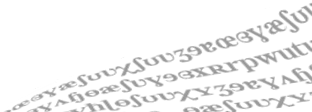Languages We Study
|
The languages we examine have been strategically selected for available resources, contrasting inherent traits, and differing degrees of divergence from English. Contrasting with Italian, for which there are vigorous long-standing communities in Toronto (but only 16% use of Italian at home by ethnic Italians), Korean represents a recent immigrant population where 66% speak Korean. Russian is of intermediate standing between them, with waves of immigration since the 1980’s and 49% Russian use at home. Faetar enjoys the same longevity as Italian, but is a far smaller community. Fieldwork began in the neighborhoods with the highest concentration of each language: Ward 9 for Italian, 10 for Russian and 23 for Korean (all demographic facts from Statistics Canada’s 2006 Census). In the future, additional languages may be investigated, as student interest allow, to develop a series of studies exploring both newer and older communities and a range of typological diversity. Candidates include Hindi, allowing us to see more clearly how length of contact influences change. Interested students: check here. |

We define our heritage speaker generations as follows:
- 1st generation (Gen 1)
- born in the homeland (see map above)
- moved to the Greater Toronto Area after age 18.
- Here at least 20 years.
- 2nd generation (Gen 2)
- born in the Greater Toronto Area (or came from homeland before age 6)
- parents qualify as 1st generation
- 3rd generation (Gen 3)
- born in the Greater Toronto Area
- parents qualify as 2nd generation
Participants are fluent enough that they agree to participate in a one-hour conversation in the Heritage Language.
Additionally, we have a sample of homeland speakers:
These speakers live in the corresponding home country (and region, usually) from which the heritage speakers' families emigrated to Toronto. (Since the Homeland speakers didn't emigrate, there is no relevant "generation" concept.) Ideally, they speak only the one relevant language, but this is difficult to control.

